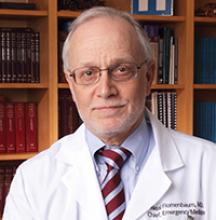In my April 2015 editorial “Anger Management,” I noted that “some of the anger that other physicians harbor toward emergency physicians (EPs) and EDs…has been expressed in the nastiest of tones in recent medical tabloid commentaries or editorials…” and called for organized emergency medicine to address the potential dangers caused by irresponsible blogs on social media. The ink on the April print edition of EM had barely dried before the anger and accusatory tone of such criticism escalated substantially, and from no less a source than the Op Ed pages of the New York Times.
In a May 2, 2015 editorial “Stroke of Fate,” respected Times columnist Maureen Dowd wrote about her niece’s experience after suffering a vertebral artery dissection that had been “diagnosed correctly and acted on in the ED,” according to a subsequent letter written by neurologist Louis R. Caplan, MD, who was quoted extensively in the column. Noting that the incidence of strokes has been rising among younger adults, the column took issue with the advice of doctors who told her niece to cut back on physical activity. Dr Caplan was consulted for a second opinion and determined that the imaging studies had been misinterpreted and that the vertebral artery had only narrowed, not closed, allowing the patient to resume her active lifestyle.
Though the column did not specify which doctors had misinterpreted the studies or who had given the unnecessarily restrictive advice, it is difficult to imagine that EPs were responsible for either. Nevertheless, Dr Caplan was subsequently quoted as saying that “stroke experts have had a hard time getting the message across to ER personnel that if a stroke is suspected, a vascular image must be taken as well as a brain image” and that going to an “ER” because of a neurological problem is similar to “run[ning] your Rolls-Royce into the local gas station.” He also said that he is afraid to go to the “emergency room” because he thinks it’s dangerous, and that patients have to “worry about the quality of treatment” there.
In a letter to emergency medicine colleagues after the column appeared, Dr Caplan apologized for quotes taken out of context, and wrote “feel free to convey…to your colleagues” that he did not mean to throw stones at EPs, but wanted to point out that undue limitations on activities can become more disabling than the stroke itself and that system issues, such as long waits and lack of access to past records, not the competency of EPs, made patients afraid. He added that he did “not think being in an ED is dangerous, but is frightening to many patients.”
Clearly, we can all agree on the need for vascular as well as other types of imaging for certain stroke presentations, and that statements in the column were not intended to be understood exactly as written— though to date, no clarifications have since appeared in the column or newspaper. But when such criticism appears in a powerful, respected, and widely disseminated media source, it is almost impossible to undo whatever damage may have been done to public perceptions of ED safety and quality of care. Although many EPs have read or learned of the subsequent clarifying letter, few nonphysicians will ever see or appreciate the disclaimers and clarifications.
To avoid such unfortunate situations in the future, all physicians must be very, very careful in framing statements to the media, and should assume that their remarks will not be placed “in context,” or nuanced as they intended. Most important, is to not disparage entire specialties or use slang terms such as “ER docs” to indicate lesser expertise than one’s own specialty. Doing so can only unnecessarily heighten patients’ fears.

